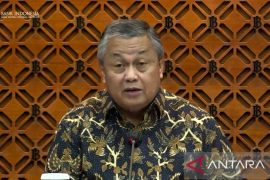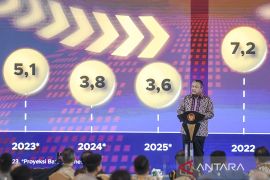Difi A. Johansyah, BI Public Relations head, said on Thursday the appreciative trend of the rupiah had emerged in the time when the regional currencies were also appreciating, even on stronger gains.
Johansyah added that the rupiah had resumed appreciation in February after a brief pause in January, partly driven by renewed inflows of capital influenced by positive foreign investor perceptions of the strength of Indonesia`s economic fundamentals.
He added that the rupiah gains also represented a positive response to the BI Rate increase and the Bank`s policy on ensuring further headroom for rupiah appreciation under its strong commitment to inflation control.
During February, the rupiah gained 2.5 percent (point to point) to close at 8,818 rupiah to the US dollar in the 28 February position.
On the decision to keep the BI rate remaining at 6.75 percent, this decision was said has not altered the tight bias in the Bank Indonesia monetary policy stance aimed at curbing the persistently high level of inflationary pressure.
Measures to curb imported inflation from escalating global commodity prices have been reinforced by ensuring added headroom for appreciation in the rupiah in line with improving global economic fundamentals.
Other actions will strengthen liquidity control through a combination of macro-prudential polices and monetary operations while allowing for reasonable banking liquidity needs.
With the combination of this monetary and macro-prudential policy mix and the unswerving government commitment mitigate high food prices, the Bank is confident that CPI inflation can be curbed in line with the target of 5 percent approximately 1 percent for 2011 for 2011 and 4.5 percent approximately 1 percent for 2012.
BI said that consumer price index inflation in February reached 0.13 percent (month to month) or 6.84 percent (year on year), down from the preceding month. Price corrections for rice and chili peppers following improvement in supply as a result of government actions contributed to 0.48 percent deflation in the volatile foods category.
Alongside this, administered prices were again marked by only minimum inflationary pressure with increases of 0.32 percent (month to month) or 5.34 percent (year on year).
Nevertheless, the Bank was keeping a close watch on a renewed increase in core inflation, now recorded at 0.31 percent (month to month) or 4.36 percent, particularly in regard to the impact of high volatile foods inflation and rising international commodity prices. (*)
Editor: Kunto Wibisono
Copyright © ANTARA 2011











